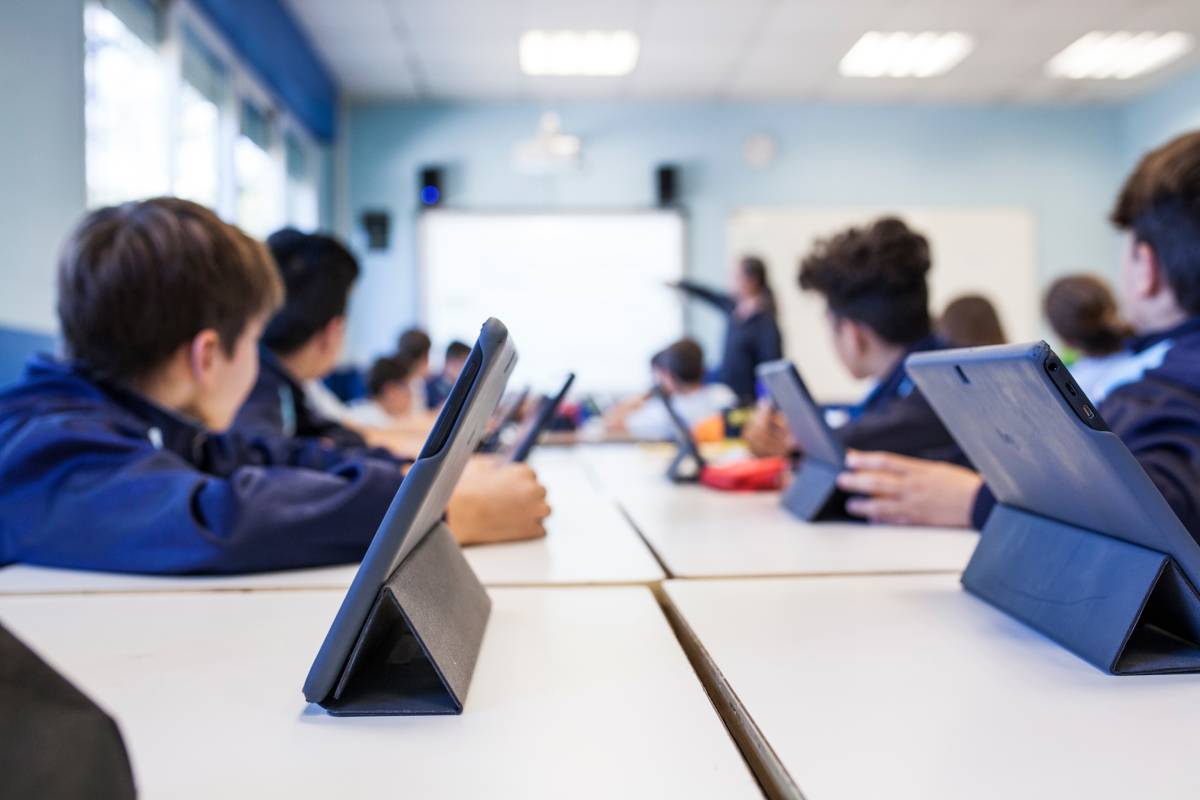Affordable Primary Science Tuition Singapore for All Learning Needs
Affordable Primary Science Tuition Singapore for All Learning Needs
Blog Article
A Comprehensive Guide to the Numerous Understanding Approaches in Primary Scientific Research Direction
The exploration of diverse understanding techniques in key scientific research direction presents a chance for teachers to boost pupil involvement and understanding substantially. By analyzing hands-on discovering methods, inquiry-based strategies, and collective strategies, we can recognize efficient methods that satisfy different finding out styles. Additionally, the combination of modern technology and separated instruction plays a crucial duty in fostering an inclusive atmosphere. However, the question remains: just how can these techniques be efficiently applied in the class to optimize their impact? The solution lies in a closer examination of each method and its effects for training scientific research.

Hands-On Discovering Methods
Hands-on knowing methods play a pivotal role in key scientific research direction, engaging students in energetic exploration and testing. These techniques enable learners to communicate directly with products and phenomena, promoting a deeper understanding of scientific principles. By utilizing manipulatives, models, and real-life experiments, teachers develop a setting where trainees can observe, hypothesize, and examine their concepts.
Such techniques not just enhance understanding yet additionally cultivate crucial reasoning and analytic skills. When pupils participate in activities like developing simple equipments, growing seeds, or conducting chemical responses, they are encouraged to ask concerns and look for responses through their very own monitorings. This experiential approach aids to debunk complicated scientific principles, making them a lot more relatable and accessible.
Furthermore, hands-on understanding promotes collaboration amongst peers, as trainees commonly function in groups to perform experiments or share findings. This team effort not just enriches their learning experience but likewise creates essential social skills. Inevitably, integrating hands-on techniques in main science guideline cultivates a lifelong love of learning and interest concerning the environment, laying a strong structure for future academic searches in science and past.
Inquiry-Based Discovering
Inquiry-based learning is an instructional technique that motivates pupils to ask inquiries, explore sensations, and create their very own understanding of scientific ideas. This technique shifts the focus from conventional teacher-led direction to an extra student-centered experience, where students take the initiative in their academic trip. By promoting inquisitiveness, inquiry-based discovering advertises deeper interaction with the product, permitting students to check out topics in a significant context.
In method, this approach often entails hands-on experiments, observations, and crucial reasoning activities that straighten closely with the scientific method. Pupils are urged to formulate theories, design investigations, and assess information, which cultivates crucial skills such as logical and problem-solving reasoning. The duty of the instructor in this structure is to assist in exploration, guiding students through the query procedure while motivating independent idea and collaboration.
Furthermore, inquiry-based knowing nurtures a feeling of ownership over the learning process, inspiring pupils to seek expertise proactively. This approach not only boosts understanding of scientific ideas however additionally fosters a long-lasting love for discovering, furnishing trainees with the skills needed to browse a significantly complex globe.
Collaborative Learning Approaches
Collective discovering strategies equip students to participate in significant communications with peers, promoting a common responsibility for their academic end results. In main science guideline, these strategies urge students to collaborate to discover clinical principles, fix troubles, and perform experiments (primary science tuition Singapore). By taking part in team tasks, pupils can take advantage of varied viewpoints, allowing for richer understanding and retention of clinical understanding
One secret aspect of collaborative learning is the emphasis on communication abilities. Trainees need to articulate their ideas, listen actively to others, and discuss concepts, every one of which are crucial competencies in both real-world and academic contexts. This social communication not just improves their understanding of scientific concepts however likewise advertises teamwork and dispute resolution abilities.
Additionally, check out here collective discovering typically leads to raised inspiration and engagement. When pupils see the worth of their contributions within a group, they are most likely to take ownership of their learning trip. Educators can facilitate this procedure by creating structured team tasks that align with curriculum objectives while offering advice on efficient cooperation methods. On the whole, integrating joint understanding approaches in primary science instruction cultivates a dynamic learning environment that prepares trainees for future scholastic and social challenges.
Modern Technology Combination in Science
The assimilation of technology in key science guideline improves finding out experiences by offering ingenious tools and resources that sustain different mentor techniques, consisting of joint discovering - primary science tuition Singapore. Using digital systems, simulations, and interactive applications enables trainees to involve deeply with scientific ideas, promoting a much more hands-on technique to knowing
Digital labs, for instance, make it possible for students to conduct experiments safely and effectively, advertising inquiry-based understanding. These tools can replicate real-world scientific situations, enabling pupils to imagine intricate processes that would be difficult to duplicate in a traditional class setting. Moreover, technology cultivates interaction and collaboration among students, as they can share searchings for and collaborate on tasks with on the internet platforms.
In addition, multimedia discussions and educational video clips can enrich lessons by satisfying varied discovering designs, making abstract ideas a lot more available. Information evaluation tools likewise empower students to gather and translate clinical data, enhancing essential thinking skills. In general, the strategic incorporation of modern technology in key scientific research instruction not only enhances involvement however also prepares pupils for a highly advanced culture, outfitting them with important skills for future clinical endeavors.
Differentiated Direction Methods
Set apart direction techniques are crucial for attending to the varied requirements of learners in primary science education. These approaches enable instructors to customize news their mentor methods to suit varying capacities, passions, and learning designs within the classroom. By utilizing differentiated direction, instructors can develop an inclusive setting that promotes interaction and improves understanding of scientific concepts.
One efficient technique is to make use of versatile organizing, which allows trainees to collaborate with peers at comparable ability levels or with differing viewpoints. This method urges peer knowing and advertises vital reasoning. In addition, using selections in projects can equip pupils, permitting them to select jobs that resonate with their rate of interests while still meeting curricular purposes.
In addition, integrating tiered tasks is an additional useful technique. By developing tasks with varying degrees of complexity, teachers can guarantee that all trainees are suitably challenged, no matter their effectiveness. Making use of formative assessments to try this out assess comprehending more allows educators to adjust their instructional approaches dynamically, making certain that each student gets the support they need.
Eventually, executing distinguished instruction techniques in main scientific research education not only boosts trainee discovering outcomes yet additionally grows a passion for science, preparing trainees for future scholastic quests.

Final Thought
In summary, efficient key scientific research direction demands a diverse approach that includes hands-on understanding, inquiry-based approaches, and joint strategies. The assimilation of modern technology and separated instruction further caters to diverse knowing styles, promoting a setting helpful to exploration and important reasoning.
The exploration of diverse knowing techniques in main scientific research direction presents a possibility for instructors to boost trainee involvement and comprehension considerably.Hands-on discovering techniques play a crucial function in primary science direction, involving pupils in active exploration and testing.Inquiry-based discovering is an instructional strategy that motivates pupils to ask concerns, explore sensations, and create their very own understanding of scientific ideas.Collective learning techniques empower trainees to involve in purposeful communications with peers, cultivating a shared responsibility for their academic end results. Generally, including joint discovering methods in primary science instruction grows a dynamic understanding setting that prepares pupils for future scholastic and social obstacles.
Report this page